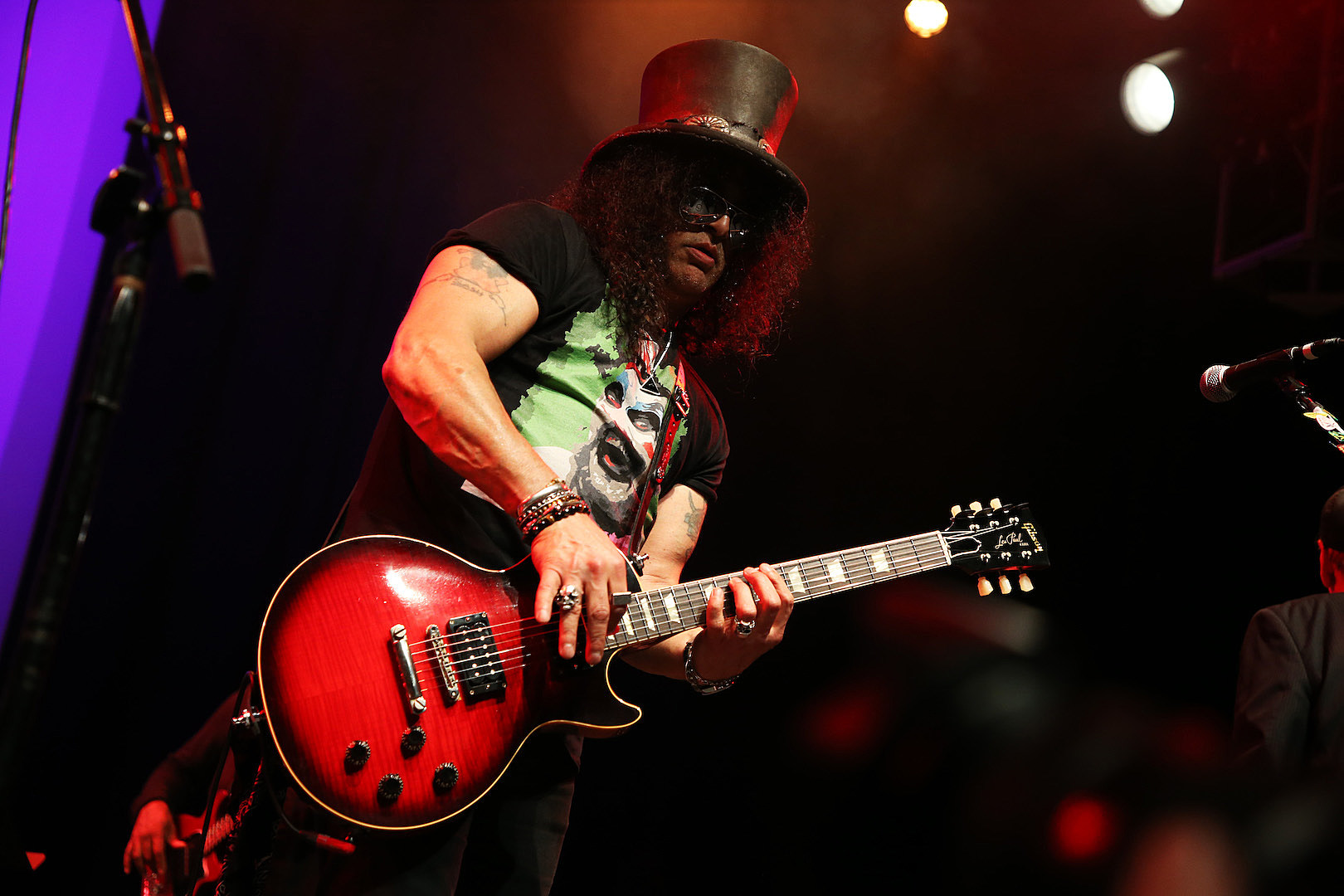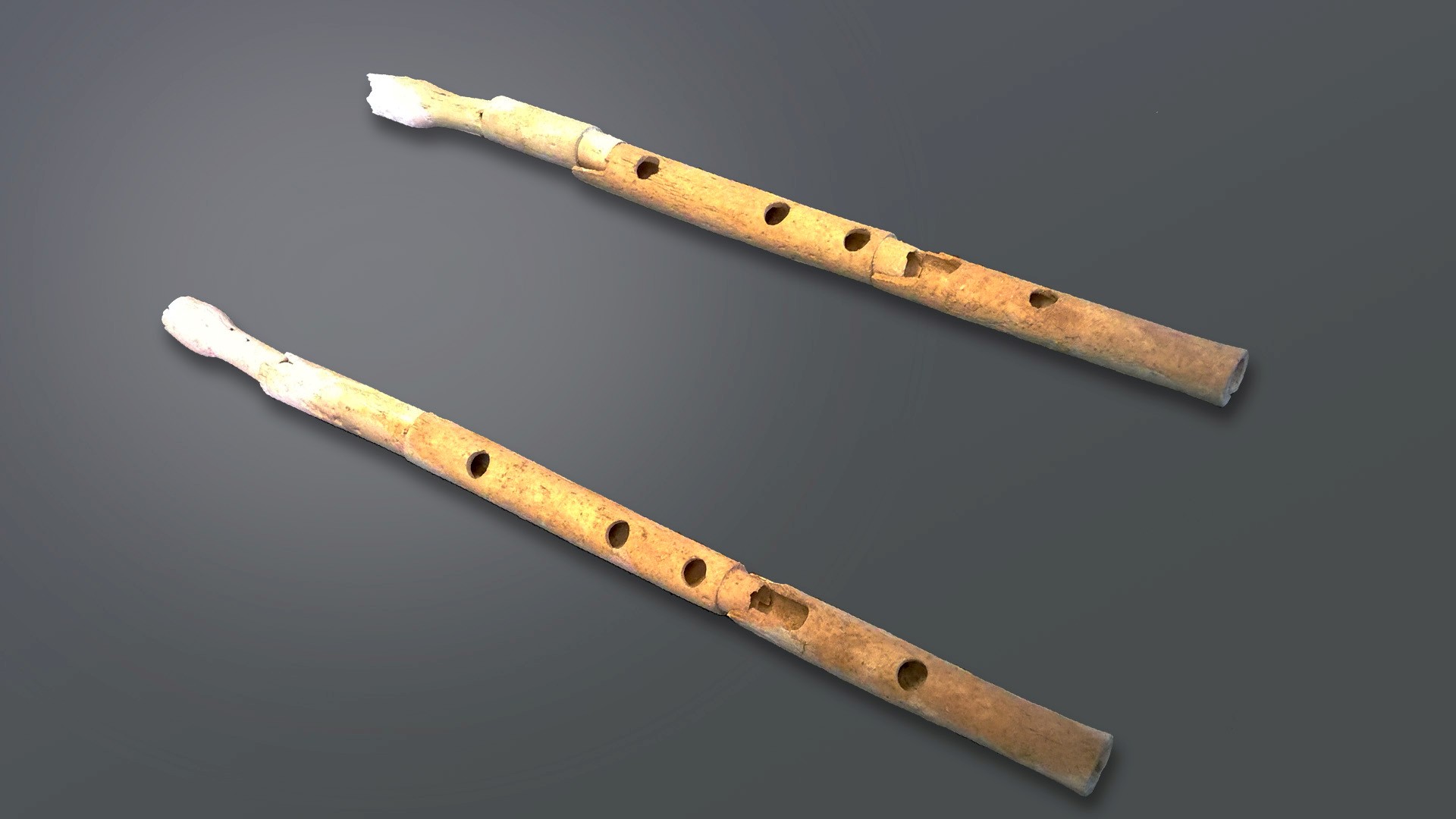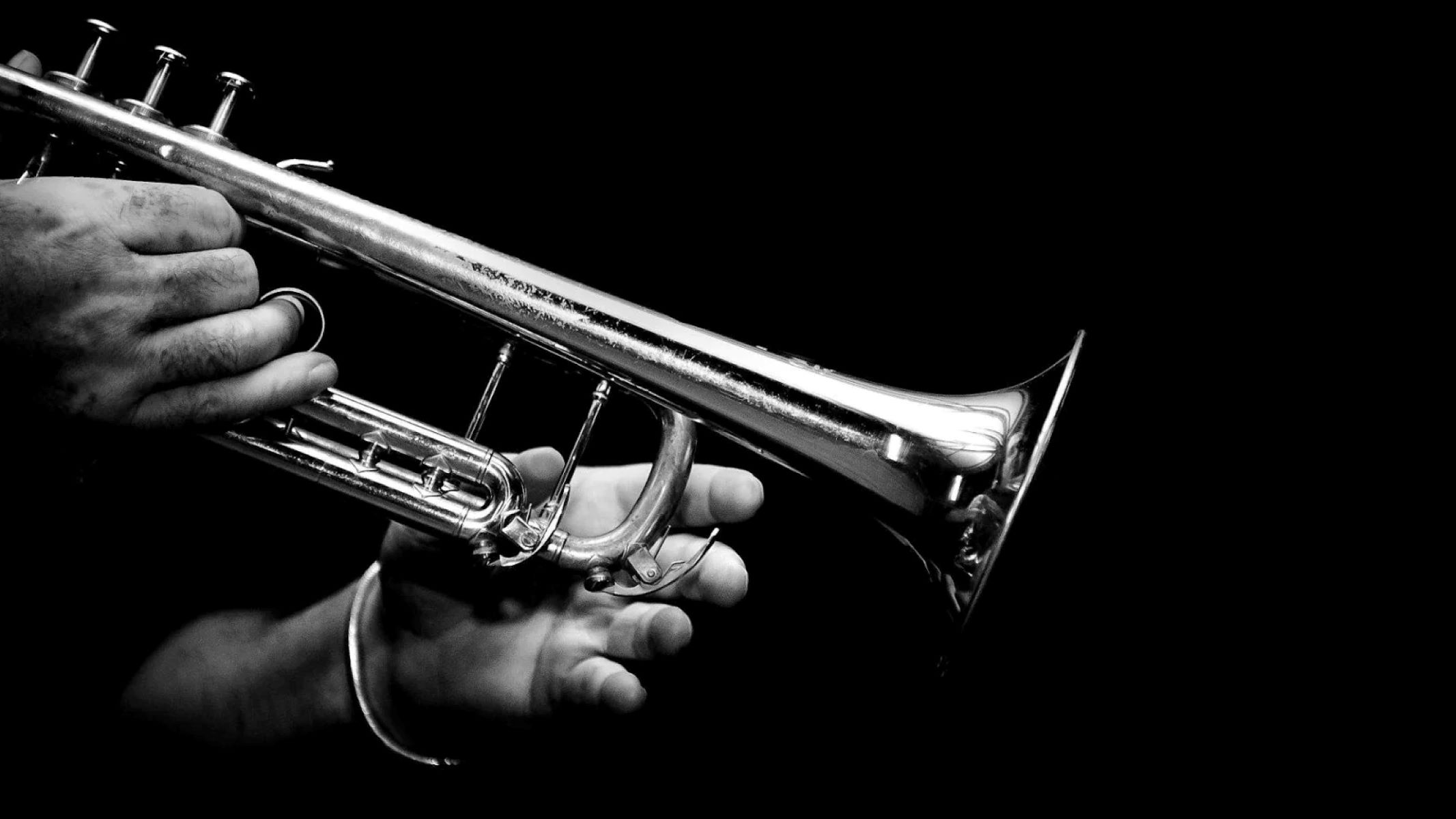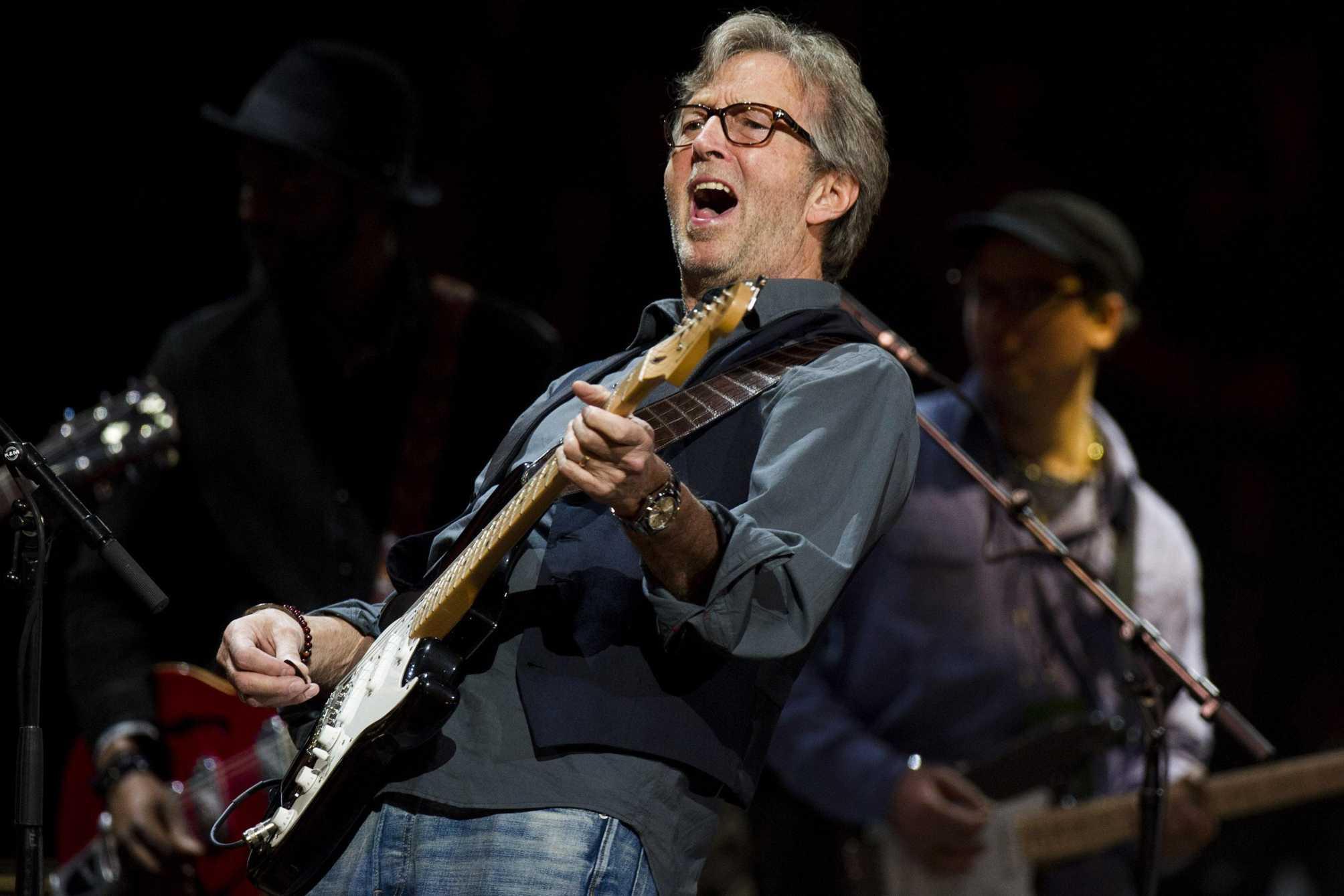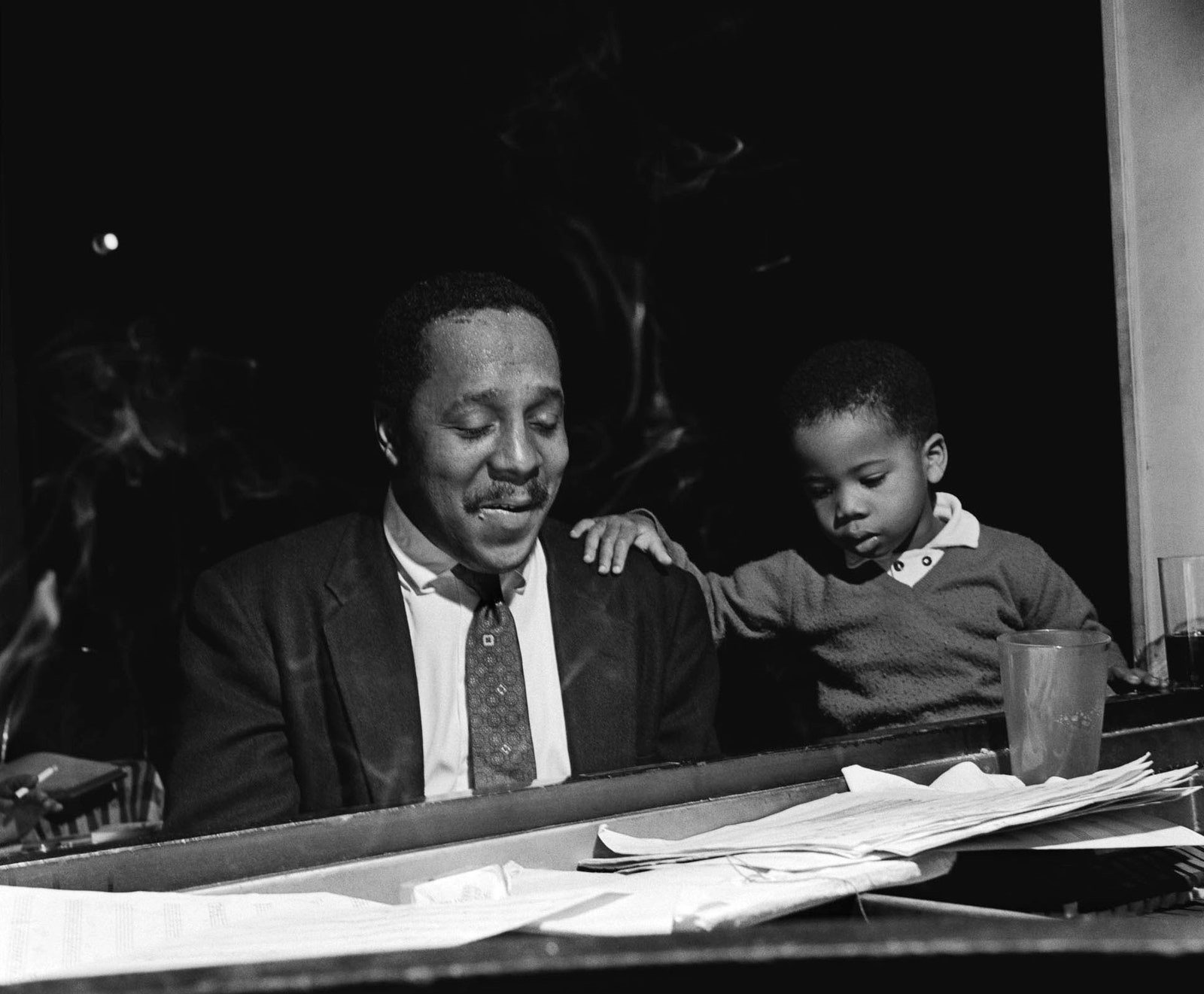Home>Genres>Rock>Which List Includes Rock Music Subgenres That Appeared In The 1990s And Early 2000s?


Rock
Which List Includes Rock Music Subgenres That Appeared In The 1990s And Early 2000s?
Published: November 22, 2023
Discover the vibrant rock music subgenres that emerged in the 1990s and early 2000s, showcasing the evolution of rock in a dynamic era.
(Many of the links in this article redirect to a specific reviewed product. Your purchase of these products through affiliate links helps to generate commission for AudioLover.com, at no extra cost. Learn more)
Table of Contents
Introduction
Rock music has evolved and diversified over the years, with different subgenres emerging to capture the changing musical tastes and cultural influences of each era. The 1990s and early 2000s were no exception, witnessing the rise of various rock subgenres that left an indelible mark on the music industry.
These subgenres offered distinct sounds and styles, attracting legions of fans and catapulting bands to mainstream success. From the grunge movement that originated in Seattle to the energetic pop punk scene and the fusion of rap and rock in nu metal, the 90s and early 2000s were undoubtedly a vibrant and transformative period for rock music.
In this article, we will delve into some of the most prominent rock subgenres that emerged during the 1990s and early 2000s, exploring their defining characteristics and notable bands. Whether you are a rock enthusiast or simply curious about the evolution of the genre, join us on this musical journey through time.
So, let’s dive in and explore the rock subgenres of the 1990s and early 2000s that continue to resonate with music lovers today.
Grunge
Grunge, often referred to as the “Seattle sound,” emerged in the early 1990s and became a prominent subgenre of rock music. It originated in the Pacific Northwest, with bands like Nirvana, Pearl Jam, and Soundgarden leading the movement.
Grunge music was characterized by its raw and gritty sound, blending elements of punk rock, heavy metal, and alternative rock. The lyrics often delved into themes of angst, alienation, and social issues, resonating with a generation disillusioned by mainstream culture.
Nirvana’s breakthrough album, “Nevermind,” released in 1991, played a pivotal role in popularizing grunge music. The iconic track “Smells Like Teen Spirit” captured the attention of both rock fans and the mainstream audience, catapulting the band to worldwide fame.
Other notable bands within the grunge genre include Alice in Chains, Stone Temple Pilots, and Mudhoney. The grunge movement had a significant impact on the music industry, paving the way for alternative rock’s mainstream success and influencing a new wave of bands in the years to come.
Despite its popularity, grunge’s reign was relatively short-lived. With the tragic death of Nirvana’s frontman Kurt Cobain in 1994, the genre faced a decline. However, its impact on the rock music landscape cannot be understated, as grunge left a lasting legacy that continues to influence musicians to this day.
Alternative Rock
Alternative rock emerged as a diverse and eclectic subgenre in the 1990s, encompassing a wide range of sounds and styles. It offered an alternative to mainstream rock, incorporating elements of punk, indie, and post-punk influences.
Alternative rock bands rejected the commercialism of the music industry and valued individuality and artistic expression. They often explored non-traditional song structures and lyrical themes, addressing social and personal issues with a unique perspective.
The rise of alternative rock was fueled by bands such as R.E.M., Pixies, Sonic Youth, and Smashing Pumpkins. R.E.M., in particular, gained widespread success with their 1991 album “Out of Time” and the hit single “Losing My Religion,” which topped charts and introduced alternative rock to a broader audience.
One of the defining moments in alternative rock history was the 1991 release of Nirvana’s “Nevermind,” which propelled the genre into the mainstream. The album’s success opened doors for countless alternative rock bands like Radiohead, Oasis, and Weezer, who enjoyed commercial success while maintaining their alternative sensibilities.
Alternative rock’s influence continued to expand throughout the decade, with bands like Radiohead pushing boundaries with their experimental soundscapes, and Foo Fighters carrying the torch of pure, unadulterated rock energy.
The legacy of alternative rock can still be seen today, as it laid the foundation for subsequent rock genres like indie rock and post-rock. Its emphasis on authenticity, individuality, and musical innovation remains a vital part of the rock music landscape.
Nu Metal
In the late 1990s and early 2000s, nu metal emerged as a powerful and controversial subgenre of rock music. Combining elements of alternative metal, rap, and industrial influences, nu metal broke new ground with its fusion of heavy guitar riffs, aggressive vocals, and hip-hop-inspired rhythms.
Bands like Korn, Limp Bizkit, and Slipknot popularized the genre, with their raw and energetic performances captivating audiences worldwide. The lyrics often touched upon themes of frustration, anger, and societal issues, resonating with a generation searching for an outlet to express their emotions.
Nu metal introduced a unique sound that appealed to both rock and hip-hop fans, blending aggressive guitars with turntablists and rap-inspired vocal delivery. Bands like Linkin Park and System of a Down incorporated electronic elements and melodic hooks, broadening nu metal’s appeal beyond its core fan base.
This subgenre faced both praise and criticism, with some embracing nu metal’s fresh approach while others dismissed it as a passing trend. Regardless, its impact on the rock music scene cannot be denied, as it brought rock into the mainstream and inspired a new generation of rock musicians.
Despite its initial popularity, nu metal experienced a decline in the mid-2000s, as bands experimented with other musical styles or disbanded. However, its influence can still be heard in the music of bands like Bring Me The Horizon and Motionless In White, who incorporate elements of nu metal into their modern sound.
Nu metal’s legacy lies in its ability to push boundaries and blend genres, challenging traditional notions of what rock music could be. Its impact paved the way for a more diverse and experimental rock landscape, leaving an indelible mark on the history of the genre.
Pop Punk
Pop punk emerged in the 1990s as a catchy and energetic subgenre of rock music. Combining the melodic hooks and simple song structures of pop music with the raucousness and attitude of punk rock, pop punk brought forth a vibrant and youthful sound that resonated with a generation of fans.
Bands like Green Day, Blink-182, and Sum 41 led the pop punk movement, capturing the hearts of teenagers and young adults with their infectious melodies and relatable lyrics. The songs often tackled themes of teenage angst, romance, and rebellion, capturing the essence of youth culture.
With their breakout albums, Green Day’s “Dookie” (1994) and Blink-182’s “Enema of the State” (1999), pop punk exploded onto the mainstream scene, garnering radio play and MTV airtime. The popularity of these bands helped bring the genre to a wider audience, paving the way for a new wave of pop punk acts to follow.
Pop punk’s influence extended beyond its catchy sound and relatable lyrics. It also had a significant impact on fashion and culture, with band members often sporting punk-inspired attire and establishing a distinct aesthetic associated with the genre.
While pop punk experienced a decline in popularity in the mid-2000s, with bands exploring other musical styles and evolving their sound, its legacy remains strong. Today, artists like Paramore, All Time Low, and Neck Deep continue to carry the torch of pop punk, infusing it with modern sensibilities and captivating a new generation of fans.
The enduring appeal of pop punk lies in its ability to capture the youthful spirit of rebellion and longing for connection. With its catchy hooks, energetic performances, and relatable lyrics, pop punk remains a beloved subgenre, always ready to ignite that nostalgic feeling of carefree youth.
Emo
The emo subculture and music genre emerged in the 1990s as a deeply introspective and emotionally-charged form of rock music. Emo bands combined elements of punk rock, indie rock, and post-hardcore, creating a sound that showcased vulnerability, introspection, and raw emotional depth.
The lyrics of emo songs often explored themes of heartbreak, personal struggles, and existential questions, resonating with a generation that craved a deeper connection with music and sought solace in emotional expression. Bands like Jimmy Eat World, Dashboard Confessional, and My Chemical Romance became synonymous with the emo movement, capturing the hearts of those who identified with its confessional and personal approach.
The popularity of emo increased in the early 2000s, with bands like Fall Out Boy and Taking Back Sunday gaining mainstream success. These bands incorporated catchy hooks, relatable lyrics, and a more polished sound, further widening emo’s appeal.
Emo fashion and emo culture also played a significant role in shaping the genre’s identity. Emo fashion was characterized by band merch, skinny jeans, studded belts, and distinctive hairstyles. The emotional and introspective nature of the genre resonated with individuals seeking an outlet for self-expression and a sense of belonging.
While emo enjoyed immense popularity in the 2000s, the genre faced criticism and stereotypes due to its association with emotional vulnerability and “sad” themes. However, emo continues to thrive today, with bands like Modern Baseball and The World Is A Beautiful Place & I Am No Longer Afraid to Die carrying the torch and expanding the boundaries of the genre.
Emo’s enduring legacy lies in its ability to provide solace and connection for those navigating the complexities of life. Its emotionally-charged lyrics and confessional style offer a space for listeners to find comfort, understanding, and a sense of community in a world that can often feel overwhelming.
Post-Grunge
Post-grunge emerged as a subgenre of rock music in the mid-1990s, following the decline of the grunge movement. Building on the grit and raw emotion of grunge, post-grunge bands aimed to create a more mainstream-friendly sound, blending alternative rock with elements of hard rock and pop sensibilities.
Post-grunge bands drew inspiration from the likes of Nirvana and Soundgarden, combining heavy guitar riffs, introspective lyrics, and catchy melodies to create a sound that resonated with a broader audience. Bands like Nickelback, Creed, and Three Days Grace achieved commercial success with their radio-friendly singles and accessible sound.
Post-grunge music retained the emotional intensity and introspective themes that defined grunge, while incorporating a more polished and radio-ready production. Lyrically, post-grunge often explored personal struggles, relationships, and introspection, reflecting the emotional depth and vulnerability associated with the genre.
Although post-grunge faced criticism for its perceived commercialization and departure from the alternative spirit of grunge, it gained a dedicated fan base and continued to evolve in the 2000s. Bands like Shinedown and Breaking Benjamin adopted the post-grunge sound, infusing it with their own unique spin and adding further layers to the genre.
While post-grunge has waned in popularity in recent years, its impact on the rock music landscape remains significant. It served as a bridge between the alternative rock of the 90s and the mainstream rock of the 2000s, introducing a wider audience to the emotional and hard-hitting aspects of the genre.
Post-grunge continues to influence contemporary rock bands, with elements of the genre finding their way into the music of acts like Stone Sour and Pop Evil. Its legacy lies in providing an accessible entry point for those seeking a balance between heavy guitar-driven music and melodic hooks.
Industrial Rock
Industrial rock emerged in the late 1980s and gained mainstream recognition in the 1990s as a genre that combined the aggression and intensity of industrial music with the power and grit of rock. It brought together elements of electronic music, heavy metal, and punk, creating a unique blend of distorted guitars, synthesized textures, and harsh vocals.
Bands like Nine Inch Nails, Ministry, and Rammstein pushed the boundaries of rock music with their industrial-infused sound. Lyrically, industrial rock explored themes of societal decay, personal struggles, and the darker aspects of human existence.
The genre’s distinctive sound was characterized by the use of industrial elements such as electronic beats, samples, and heavily processed vocals, combined with the raw energy of traditional rock instrumentation. This fusion created a gritty and intense sonic landscape that appealed to fans of both rock and electronic music.
Nine Inch Nails, led by Trent Reznor, played a pivotal role in popularizing industrial rock with their breakthrough album “The Downward Spiral” in 1994. The album’s hit single “Closer” became an anthem of the genre and solidified Nine Inch Nails’ status as industrial rock pioneers.
Industrial rock’s influence extended beyond the 90s, as bands like Marilyn Manson, KMFDM, and Orgy continued to push the boundaries of the genre in the early 2000s. Their theatrical live performances and provocative imagery added to the overall impact of industrial rock as a subculture with its own distinct identity.
Today, industrial rock continues to evolve and inspire a new generation of bands like Health and 3Teeth, who fuse traditional industrial sounds with elements of modern rock and electronic music.
The industrial rock subgenre remains a testament to the power of experimentation and the willingness to challenge conventions. It showcased the fusion of two seemingly disparate genres, creating a unique and influential style that continues to captivate and intrigue listeners.
Britpop
In the mid-1990s, Britpop emerged as a distinctly British subgenre of rock music, characterized by its catchy melodies, lyrics rooted in British culture, and a revival of the British rock scene. Britpop bands celebrated British identity, drawing influences from classic British guitar music, mod culture, and the rebellious spirit of the 1960s.
Oasis, Blur, and Pulp were at the forefront of the Britpop movement, with their anthemic songs and charismatic frontmen becoming icons of the era. Oasis, in particular, achieved massive success with their debut album, “Definitely Maybe” (1994), and the follow-up, “What’s the Story Morning Glory?” (1995), solidifying their status as one of the biggest bands of the time.
Lyrically, Britpop songs often reflected the lives and experiences of working-class youth in Britain, addressing themes of youth culture, class struggle, and disillusionment with the political climate. These bands created a distinct sound that combined the energy of rock with the melodic sensibilities of pop, creating infectious and instantly recognizable tunes.
While the rivalry between Oasis and Blur became a focal point of Britpop, the movement encompassed a wide range of bands, including Suede, Supergrass, and Elastica, all contributing to the vibrant and diverse British music scene of the era.
Although the Britpop movement began to decline by the late 1990s, its impact on British music and culture cannot be overstated. It revitalized the popularity of British rock music, inspiring a new generation of bands and shaping the cultural identity of the nation.
To this day, Britpop continues to influence the music landscape, with bands like Arctic Monkeys and The Vaccines incorporating elements of the genre into their sound. The legacy of Britpop lies in its celebration of British culture, its catchy tunes, and its contribution to the enduring image of British rock music.
Garage Rock Revival
In the early 2000s, there was a resurgence of interest in the raw and energetic sounds of garage rock, leading to the emergence of the garage rock revival movement. This revivalist subgenre sought to capture the spirit of the original garage rock bands from the 1960s, characterized by their lo-fi production, simple song structures, and a DIY ethos.
The garage rock revival movement was inspired by bands like The White Stripes, The Strokes, and The Hives, who brought a modern twist to the vintage sound. These bands fused garage rock with elements of punk, blues, and indie rock, creating a fresh and infectious sound that resonated with audiences craving straightforward and energetic music.
The White Stripes, in particular, gained widespread attention with their stripped-down approach, featuring the powerful vocals and gritty guitar of Jack White, accompanied solely by Meg White on drums. Their breakthrough album, “White Blood Cells” (2001), became a symbol of the garage rock revival movement, influencing countless bands to follow suit.
Other notable bands within the garage rock revival movement included The Black Keys, Arctic Monkeys, and The Vines, each embracing the rawness and simplicity of garage rock while adding their own unique flavors to the genre.
The resurgence of garage rock not only reintroduced audiences to the raw and infectious energy of the past but also inspired a wave of young musicians to pick up instruments and start their own bands. The DIY approach and the emphasis on capturing the essence of live performance appealed to those seeking an alternative to highly produced and polished mainstream music.
While the garage rock revival movement began to wane in popularity by the mid-2000s, its impact on the rock music scene remains significant. Many bands influenced by the genre continue to create music today, ensuring that the spirit of garage rock lives on.
The garage rock revival movement’s legacy lies in its celebration of simplicity, authenticity, and unapologetic rawness. It reminded listeners of the power of simple, catchy tunes and reignited the flame of rock music’s rebellious and DIY spirit.
Post-Hardcore
Post-hardcore emerged in the 1990s as a blend of hardcore punk and alternative rock, pushing the boundaries of both genres and incorporating elements of emo and experimental music. It retained the intensity and aggression of hardcore punk while adding a more melodic and dynamic approach, creating a sound that was both cathartic and emotionally charged.
Bands like Fugazi, At the Drive-In, and Thursday were pioneers of the post-hardcore movement, infusing their music with intricate guitar work, complex song structures, and introspective lyrics. These bands pushed the boundaries of the genre, incorporating elements of post-rock, math rock, and even progressive rock into their sound.
Lyrically, post-hardcore explored personal introspection, social issues, and emotional turmoil, often delving into themes of anxiety, identity, and societal pressures. The lyrics were often poetic and introspective, reflecting the genre’s emphasis on emotional expression and personal introspection.
Post-hardcore bands embraced experimentation and a DIY ethos, challenging traditional song structures and incorporating unconventional instrumentation and effects. This willingness to push boundaries created a unique and diverse sonic landscape within the genre, showcasing both heaviness and vulnerability.
While post-hardcore continued to evolve throughout the years, it had a significant impact on the rock music scene. The genre encouraged bands to explore the emotional depths of their music, inspiring a wave of artists to embrace vulnerability and push the boundaries of alternative rock.
Today, bands like La Dispute, Touché Amoré, and Pianos Become the Teeth carry the torch of post-hardcore, infusing the genre with new ideas and influences. They continue to challenge conventions and explore the possibilities of emotional expression within the framework of aggressive music.
The legacy of post-hardcore lies in its ability to combine intensity and emotion, offering a cathartic and powerful outlet for both musicians and listeners. Its impact on the rock music scene remains undeniable, as it continues to inspire and influence new generations of musicians seeking to channel their inner turmoil into a meaningful and honest form of expression.
Indie Rock
Indie rock, short for independent rock, emerged as a genre in the 1980s and gained prominence in the 1990s as a reaction to the mainstream music industry. Indie rock bands sought to maintain creative control over their music and lyrics, often releasing their music through independent record labels, hence the name.
Indie rock is characterized by its DIY ethos, diverse musical influences, and a rejection of mainstream trends. It encompasses a wide range of styles, from lo-fi and acoustic-driven sounds to more experimental and genre-blending compositions.
Artists like The Smiths, Pavement, and Radiohead were pioneers of the indie rock movement, renowned for their distinctive sound, introspective lyrics, and disregard for industry conventions.
Lyrically, indie rock often delves into personal reflection, social commentary, and existential themes. It embraces introspection and individuality, giving voice to the introspective and non-conformist nature of the genre.
Indie rock reached its peak popularity in the 2000s with bands like Arcade Fire, The Strokes, and Arctic Monkeys, who achieved mainstream success while maintaining their indie roots.
One of the defining features of indie rock is the emphasis on artistic integrity, innovation, and a DIY approach to music-making. Many indie rock bands actively participate in the production and promotion of their work, fostering a strong sense of community and authenticity.
Today, indie rock continues to thrive, with bands like Tame Impala, Vampire Weekend, and Courtney Barnett pushing the boundaries of the genre. Indie rock’s influence can be heard in various modern movements such as indie folk, dream pop, and garage rock revival.
The legacy of indie rock lies in its celebration of individuality, artistic freedom, and unconventional approaches to music-making. It remains a vital force in the music industry, allowing independent artists to express themselves authentically and create music that resonates with a diverse audience.
Rap Rock
Rap rock, also known as rapcore or rap metal, emerged in the late 1980s and gained significant popularity in the 1990s and early 2000s. It is a fusion genre that combines elements of hip-hop and rock music, blending rap vocals with heavy guitar riffs and rock instrumentation.
Rap rock found its roots in bands like Run-D.M.C. and Beastie Boys, who incorporated rock samples and instrumentation into their rap songs. However, it was the collaboration between bands like Rage Against the Machine, Linkin Park, and Limp Bizkit that propelled rap rock into the mainstream.
Lyrically, rap rock delves into a wide array of themes, ranging from personal struggles and social issues to political commentary and party anthems. It captures the raw energy and rebellious spirit of both hip-hop and rock music, creating a unique and captivating sonic experience.
The blend of rap and rock elements in rap rock created an energetic and infectious sound that appealed to a broad audience. It offered a fresh approach to music, bringing together the urban edge of rap with the aggressive and distorted guitars of rock.
Rap rock faced criticism for its perceived commercialized and formulaic sound, but its popularity and impact on the music scene cannot be denied. The genre provided an outlet for diverse artists to express themselves, and its crossover appeal introduced new listeners to both rap and rock music.
Although the popularity of rap rock waned in the mid-2000s, its influence can still be witnessed in the music of contemporary artists like Hollywood Undead and Enter Shikari, who infuse rap and rock elements into their sound.
The legacy of rap rock lies in its ability to bridge the gap between two distinct genres, showcasing the power of fusion and collaboration. It remains a testament to the dynamic and innovative nature of music, demonstrating that when different styles are combined, they can create something truly captivating and original.
Conclusion
The 1990s and early 2000s were a transformative period for rock music, witnessing the emergence of various subgenres that left an indelible mark on the music industry. From the raw and emotionally charged grunge movement to the catchy melodies of pop punk, the diverse range of rock subgenres captivated audiences and shaped the sound of the era.
Grunge, with its combination of punk and heavy metal influences, introduced a raw and introspective sound that resonated with a generation disillusioned by mainstream culture. Alternative rock embraced authenticity and artistic expression, while nu metal fused rap and rock to create an aggressive and energetic sound.
Pop punk brought infectious melodies and relatable lyrics, capturing the spirit of youth culture and rebellion. Emo delved into deep emotional introspection, providing a cathartic outlet for listeners. Post-grunge took the grit of grunge and added a more radio-friendly approach, paving the way for mainstream success.
Industrial rock pushed boundaries, blending industrial electronics with the power of rock music. Britpop celebrated British identity and revived the British rock scene, while garage rock revival reintroduced the raw and DIY sound of garage rock.
Post-hardcore merged intensity and introspection, showcasing the emotional depth of aggressive music. Indie rock celebrated artistic freedom and individuality, while rap rock brought together the energy of rap with the power of rock.
Each subgenre had its own unique characteristics and contributed to the rich tapestry of rock music. While some subgenres experienced a decline in popularity, their influence can still be seen in the music of contemporary bands who continue to push boundaries and experiment with different styles.
As we reflect on the 1990s and early 2000s, we recognize the lasting impact of these rock subgenres. They not only shaped the sound of the era but also inspired a new generation of musicians and provided a voice for listeners seeking emotional catharsis and a sense of belonging.
The diverse range of rock subgenres that emerged during this period showcased the dynamic and ever-evolving nature of rock music. They continue to resonate with fans, reminding us of the power of music to transcend boundaries, captivate our emotions, and shape cultural movements. As rock music evolves in the future, we can look back at these subgenres as pillars of artistic expression and musical innovation.





